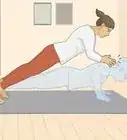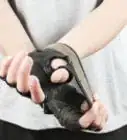This article was co-authored by Monica Morris. Monica Morris is an ACE (American Council on Exercise) Certified Personal Trainer based in the San Francisco Bay Area. With over 15 years of fitness training experience, Monica started her own physical training practice and gained her ACE Certification in 2017. Her workouts emphasize proper warm-ups, cool-downs, and stretching techniques.
There are 9 references cited in this article, which can be found at the bottom of the page.
wikiHow marks an article as reader-approved once it receives enough positive feedback. In this case, 80% of readers who voted found the article helpful, earning it our reader-approved status.
This article has been viewed 1,278,674 times.
Are you ready to impress people at the gym or at the beach, with a bigger, more muscular chest? By adding more intensity to your exercise regimen, eating plenty of calories to fuel your workouts, and doing exercises that target your pecs, you can build muscle there within a matter of weeks. Whether you seek to become a professional bodybuilder or simply improve your physique, a big, muscular chest is an impressive accomplishment.
Steps
Focusing on Muscle Growth
-
1Take an explosive approach to weight training. Studies show that lifting fast and hard causes muscles to grow more quickly than lifting slowly. "Explosive" weight training is the key to getting bigger chest muscles. Instead of counting your reps, you can try timing your workouts. Set a timer for a minute or two and do as many reps as fast as you can during the allotted time period.[1]
- This type of training requires perfect technique. "Fast on the concentric, slow on the eccentric" is the most effective way to build muscle. In bench press, the push up is the concentric, and lowering the bar to your chest is the eccentric. In pec flyes, bringing the arms together is the concentric, and lowering your arms to the sides is the eccentric.
-
2Try as hard as you can. In addition to exercising more quickly, you should take a more intense approach to working out. Muscles need to be challenged in order to grow. That means you should be lifting as much weight as you can for ten reps or so. It doesn't matter how much weight you lift in relation to others; if you're lifting enough to challenge yourself, you'll see muscle growth.[2]
- Determine how much weight you should be lifting by experimenting with different weights until you find the one you can lift about 10 times before you have to stop. If you can only lift a weight 6 or so times, it's too heavy. If you can lift it 15 times, it's too light.
- Working with a trainer is a good idea if you're a beginner. Make sure you don't push yourself too hard, or you'll risk injuring yourself.
Advertisement -
3Check your weight target every couple weeks. One method of weight training is to gradually move on to heavier weights. Every other week or so, see if you can handle a little more weight. It's not helpful to push yourself to exhaustion or to risk injury, but it's good to find that sweet spot where your workout is doable but challenging.
-
4Rest your muscles effectively. You shouldn't work out your chest muscles every single day. They need time to recover and build up stronger and bigger in between workouts. On the days when you aren't exercising your pecs, work on your legs or back. Be sure to get a good night's sleep each night, too, so your muscles repair fully after workouts.[3]
-
5Keep up moderate cardio. Cardio exercises like running, biking, swimming, and team sports improve heart health and provide other benefits weight training cannot. Now's not the time to spend all your energy running marathons, but aim for cardio sessions that last at least 30 minutes, five days a week.
- If cardio is getting in the way of your lifting, switch your priorities and do weight training first, then cardio second.
Doing Chest Exercises
-
1Do bench presses. The bench press is considered the single most effective exercise for those seeking to build a big chest. Lifting heavy weights with few repetitions is the best way to build muscle. You can use a bench press machine, barbell or even dumbbells to perform this exercise.[4]
- Have someone spot you. If you're lifting to failure (or the point where your muscles physically cannot support the lift), you absolutely need a spotter to catch the weight for you. Make sure that person is physically capable of catching whatever you might drop.
- Select a weight that you can lift at 7 to 10 times.
- Lie on a weight bench on your back. Grip the bar with hands slightly wider than shoulder-width apart.
- Lower the bar slowly until it touches your chest. Then return to the starting position.
- Repeat until you have completed this movement 5 to 7 times, or reached failure.
- Rest for a bit, then do 2 more sets.
- If you can perform 10 repetitions easily, add more weight.
-
2Use dumbbells or a cable station to do flyes. Lighter weights are recommended for this exercise. The weight limit is determined by your shoulder, which is the pivot of a long lever formed by your extended arm.[5]
- Lie on your back and grasp a dumbbell or cable handle in each hand.
- Extend your arms straight up in front of you.
- Keep your arms extended and slowly lower your hands to either side of your body.
- Return to the starting position.
- Repeat for a total of 3 sets of 10 to 12 repetitions.
- Increase weight after you can perform 12 repetitions easily.
-
3Superset two or more exercises in order. Supersets force your muscles to work harder, because you're doing one exercise right after another. They can be very effective in building up muscle.[6]
- For instance, after doing 10 reps of the flat bench press, go immediately to dumbbell flyes and perform as many reps as you can. Or, follow the bench press with as many push-ups as you can do.
-
4Try drop sets. For a drop set, lessen the weight on each successive set and go to failure.
- Perform at least 10 reps of the bench press or flyes. Immediately remove 10 pounds and perform the exercise to failure. Then, remove 10 pounds again and once more perform the exercise to failure.
-
5Do push-ups. For maximum benefits, do a variety of push-ups. There's nothing more effective than the classic move:[7]
- Space your hands farther than shoulder-width apart, shoulder-width apart or close together.
- Place your feet on a bench and do decline push-ups, or place feet on the floor and hands on a bench for incline push-ups.
- Push yourself to failure for each set.
-
6Do dips. These can be performed on a dip bar or even between two high-backed chairs.[8]
- Hold yourself upright between the bars or chairs, then bend your elbows and lower your body until you feel a stretch in your chest.
- Return to the starting position and repeat.
- For added benefit, tie a weight plate around your waist or grasp a dumbbell between your ankles or knees while performing this exercise.
-
7Do pull-ups or chin-ups. Pull-ups will not increase the size of your chest, but they complement your efforts by strengthening the back and stomach. Chin-ups (with arms closer together in an underhand grip) do engage your pectoralis major, but still focus primarily on other muscles.[9]
Eating for Bigger Muscles
-
1Eat plenty of healthy food. Your body will consume muscle if you do not intake enough calories to sustain your activity level. If you want to gain muscle, you need to create a calorie surplus, and most of that should be complex carbohydrates and protein. Avoid overloading on simple carbs and fats, which do not provide long-term energy and can encourage fat gain instead of muscle.
- Eat a balanced diet of whole grains, protein (meat, fish, eggs, tofu, etc.), fruits and veggies and fiber.
- Avoid sugary drinks and desserts, fast food, meat that is laden with nitrates and hormones, and salty snack foods.
-
2Eat more than three meals a day. When you're focusing on muscle growth, your body needs a lot of fuel. Eating three regular-sized meals a day isn't going to cut it. Add two more meals, each with a protein source roughly the size of your palm. You may have to eat more than you actually feel hungry for, but you'll be happy with the results when you see your chest getting bulkier.[10]
- If you are lean and want to gain muscle weight, increase portion sizes. If you have excess fat you'd like to lose, keep portion sizes under control.
- Eat a healthy meal an hour or so before working out. Go for healthy carbohydrates like quinoa, beans, or brown rice, paired with a light protein.
- Eat another meal after you work out to help your muscles repair and build up stronger.
-
3Drink plenty of water. You should be drinking 8-10 glasses a day, both to keep you hydrated and to help your muscles process the protein you're taking in. Drink water before and after each workout.[11]
-
4Take supplements. Big muscle growth is often helped along with supplements. Creatine replicates a natural enzyme the body produces to promote muscle growth and strength. Taking the recommended dosage has been shown to help muscles get bigger, faster.[12]
Expert Q&A
Did you know you can get expert answers for this article?
Unlock expert answers by supporting wikiHow
-
QuestionCan you get a big chest from just pushups?
 Monica MorrisMonica Morris is an ACE (American Council on Exercise) Certified Personal Trainer based in the San Francisco Bay Area. With over 15 years of fitness training experience, Monica started her own physical training practice and gained her ACE Certification in 2017. Her workouts emphasize proper warm-ups, cool-downs, and stretching techniques.
Monica MorrisMonica Morris is an ACE (American Council on Exercise) Certified Personal Trainer based in the San Francisco Bay Area. With over 15 years of fitness training experience, Monica started her own physical training practice and gained her ACE Certification in 2017. Her workouts emphasize proper warm-ups, cool-downs, and stretching techniques.
ACE Certified Personal Trainer
-
QuestionI am 14 and I weigh 110 lbs. I want to weigh 130 lbs in the next few months. What is a good way to gain weight?
 Michele DolanMichele Dolan is a BCRPA certified Personal Trainer in British Columbia. She has been a personal trainer and fitness instructor since 2002.
Michele DolanMichele Dolan is a BCRPA certified Personal Trainer in British Columbia. She has been a personal trainer and fitness instructor since 2002.
Certified Fitness Trainer
-
QuestionCan you suggest the exercise to enlarge my chest using the resistance band?
 Michele DolanMichele Dolan is a BCRPA certified Personal Trainer in British Columbia. She has been a personal trainer and fitness instructor since 2002.
Michele DolanMichele Dolan is a BCRPA certified Personal Trainer in British Columbia. She has been a personal trainer and fitness instructor since 2002.
Certified Fitness Trainer To work the chest muscles with a resistance band you need to anchor the band behind you and pull the ends of the band forward. Single arm pec flyes can be done with one end of the band positioned behind you and out to the side. Pull the band forward starting with your arm extended all the way out to the side.
To work the chest muscles with a resistance band you need to anchor the band behind you and pull the ends of the band forward. Single arm pec flyes can be done with one end of the band positioned behind you and out to the side. Pull the band forward starting with your arm extended all the way out to the side.
References
- ↑ http://www.menshealth.com/fitness/explosive-exercises-strength
- ↑ https://www.mensjournal.com/health-fitness/rep-range-builds-most-muscle/
- ↑ https://www.self.com/story/rest-strength-workouts
- ↑ Monica Morris. Certified Personal Trainer. Expert Interview. 18 November 2019.
- ↑ Monica Morris. Certified Personal Trainer. Expert Interview. 18 November 2019.
- ↑ https://www.mensjournal.com/health-fitness/what-superset-and-why-should-i-do-it/
- ↑ Monica Morris. Certified Personal Trainer. Expert Interview. 18 November 2019.
- ↑ Monica Morris. Certified Personal Trainer. Expert Interview. 18 November 2019.
- ↑ Monica Morris. Certified Personal Trainer. Expert Interview. 18 November 2019.
About This Article
To build a big chest, focus on doing exercises that encourage muscle growth, like bench presses, flyes, push ups, dips, and pull ups. When you’re exercising, use an “explosive” technique, which involves timing each set, rather than counting reps, and gradually increase your weight targets every few weeks. Be sure to exert all of your effort and try your hardest to last as long as possible. If you’re just beginning, work with a trainer to ensure that you’re safe. For tips on performing exercised that build chest muscles, and eating a healthy diet, read on!

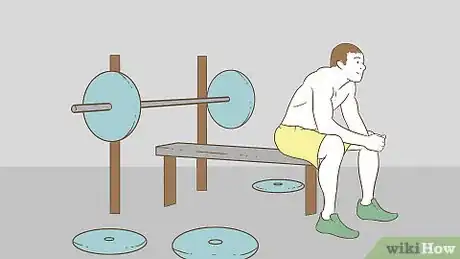
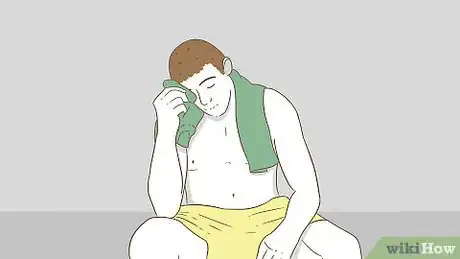

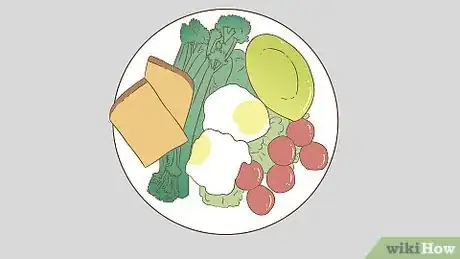
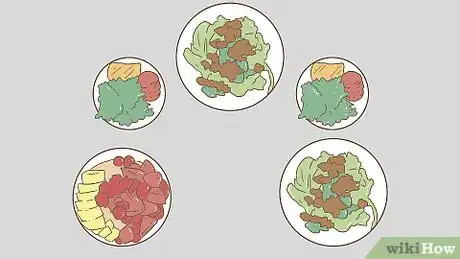
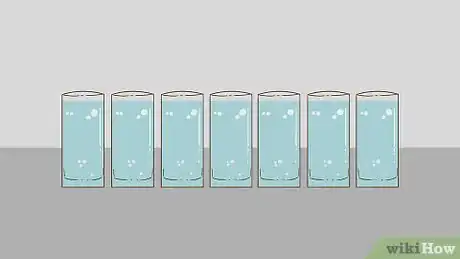
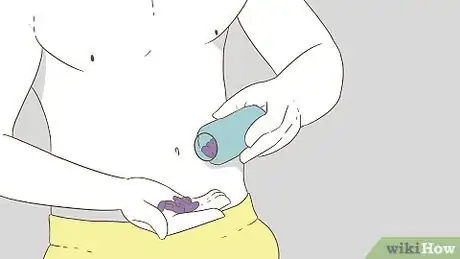
-Step-10-Version-5.webp)
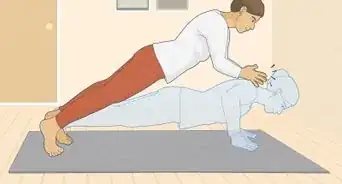


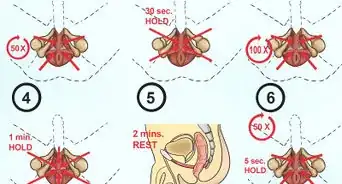

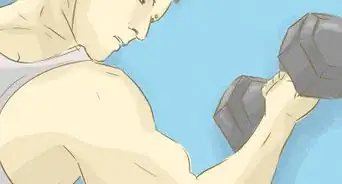
-Step-24.webp)

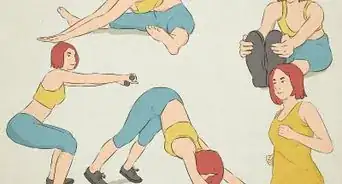












-Step-10-Version-5.webp)
